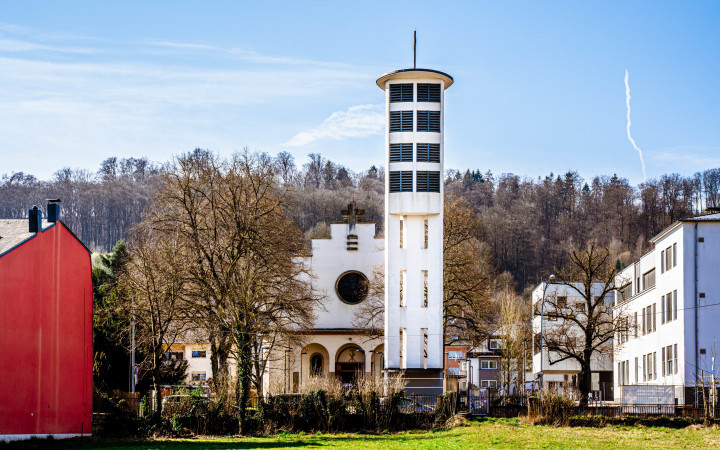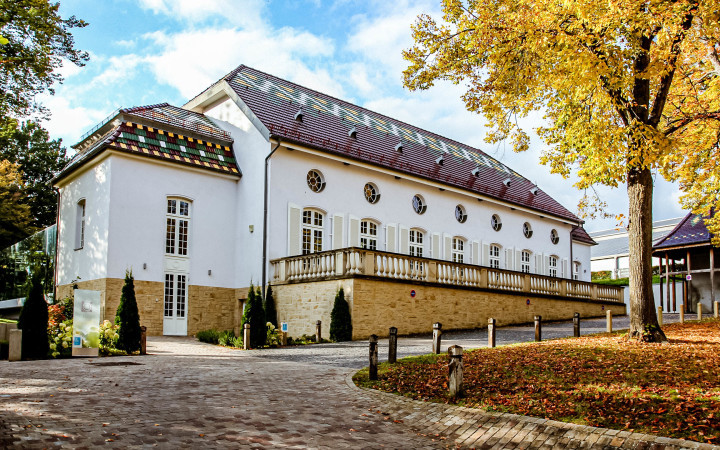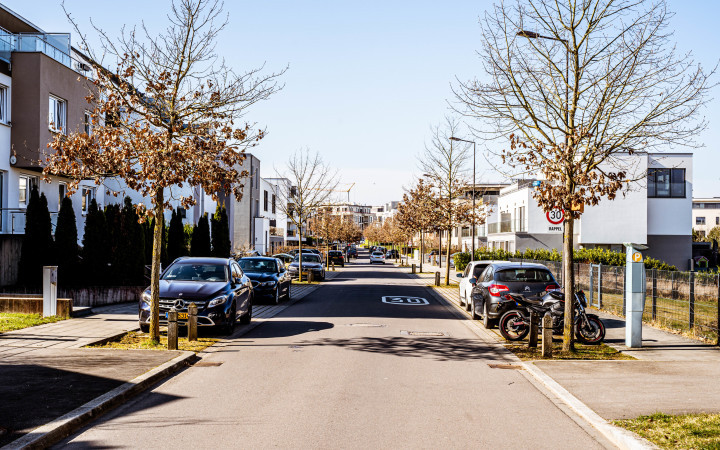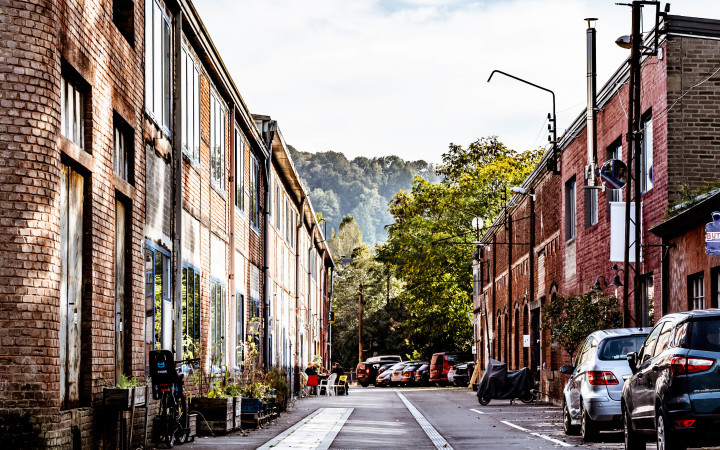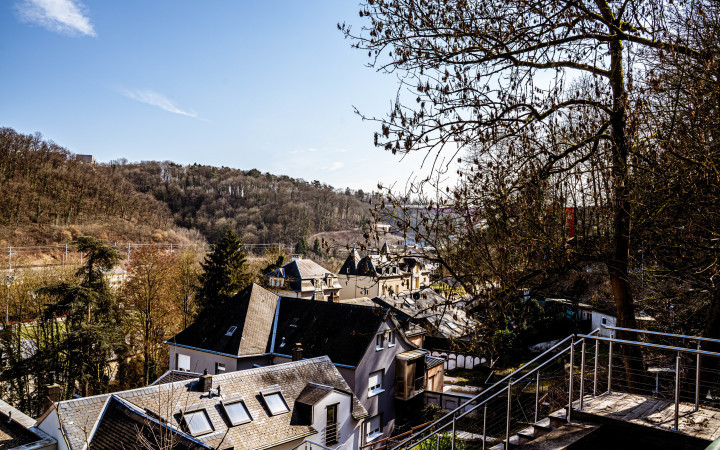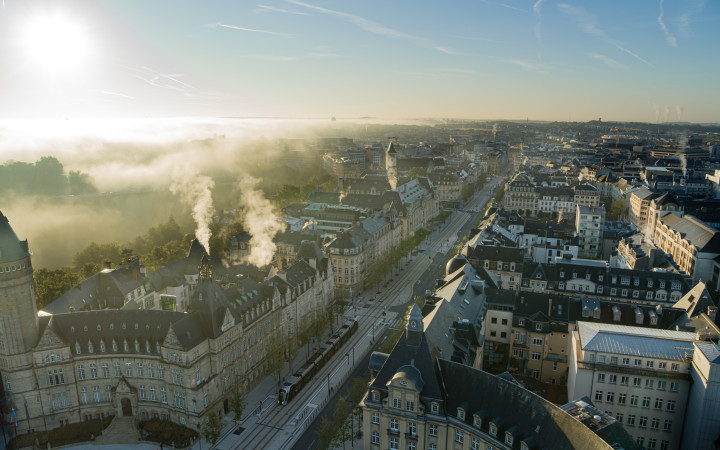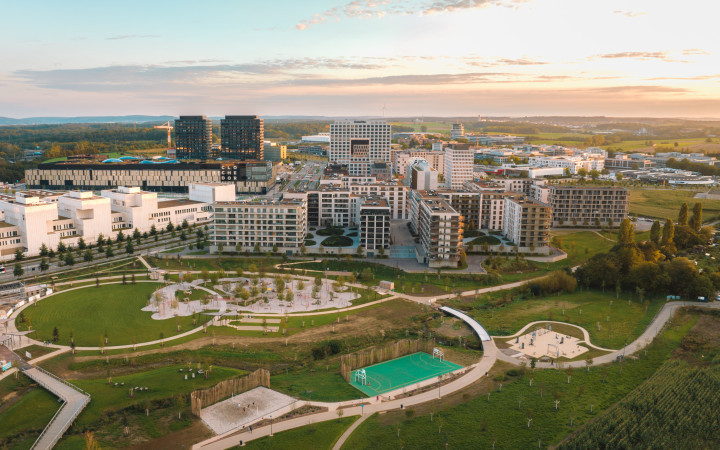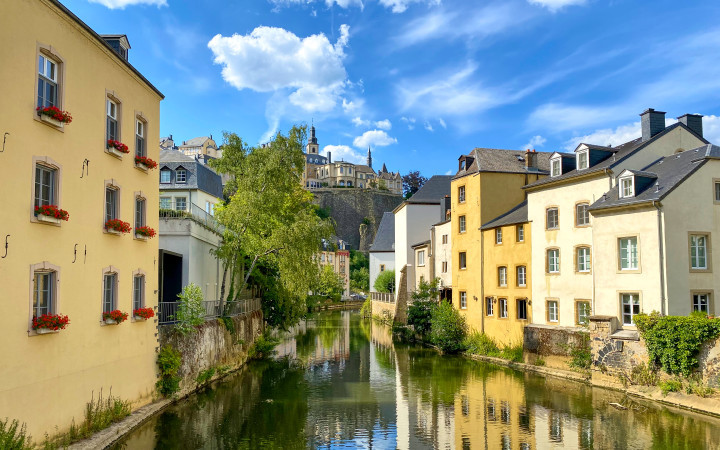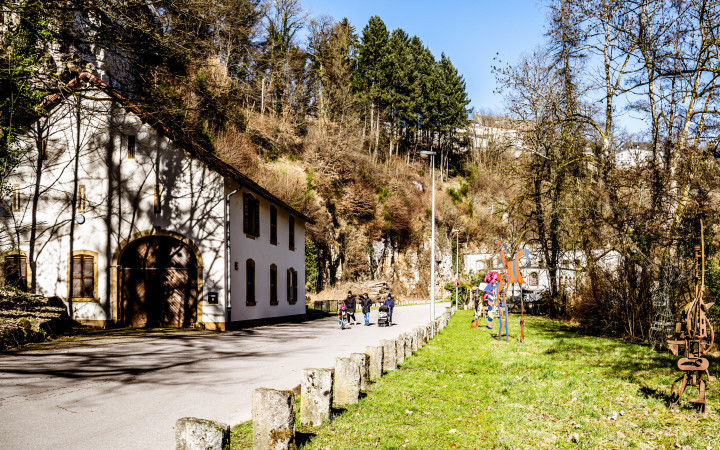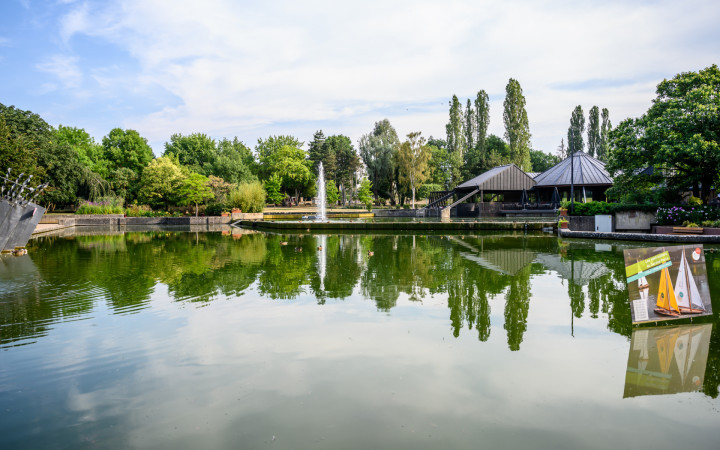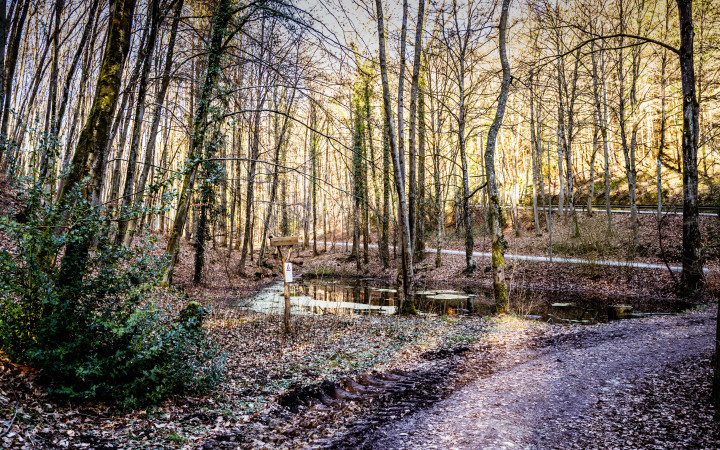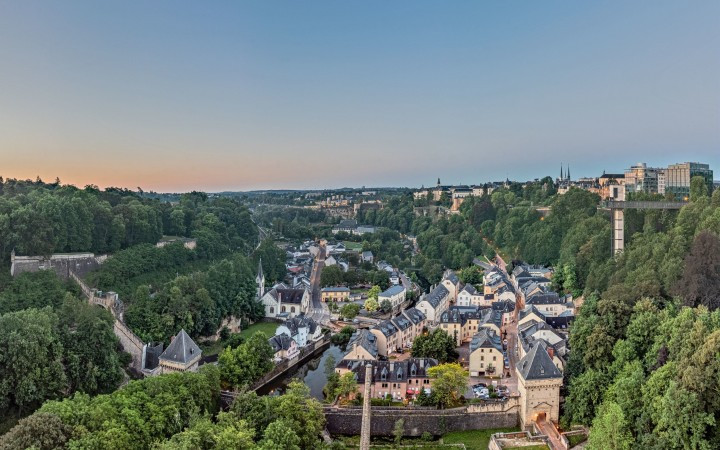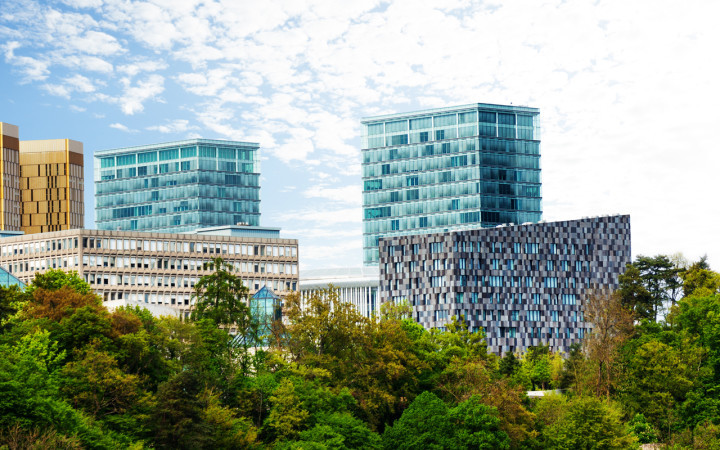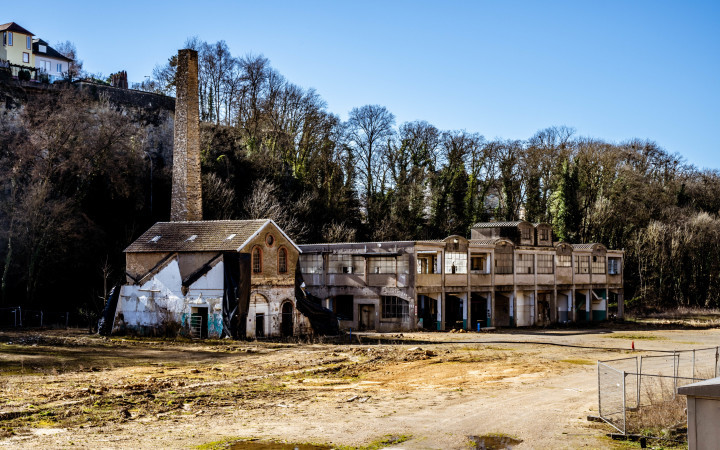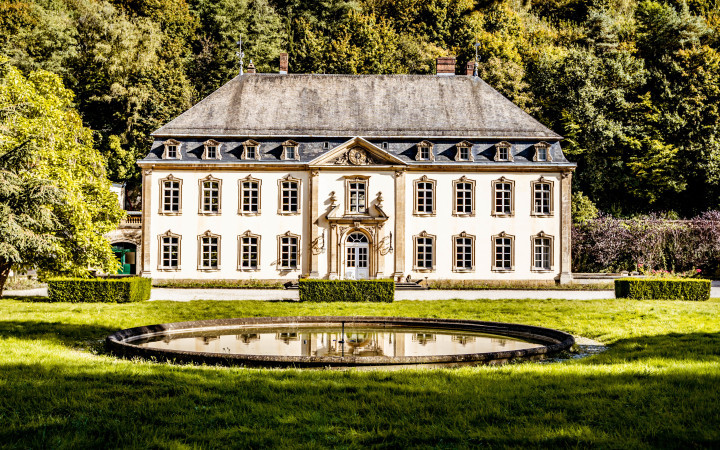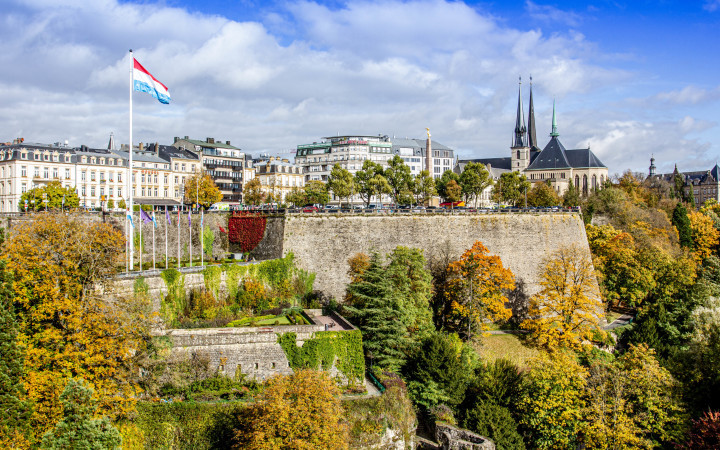
Weimerskirch
Along with Grund, Pfaffenthal and the Bock promontory, Weimerskirch is also one of Luxembourg City’s oldest districts, from which the current city grew up.
One of the oldest places of worship in Luxembourg
In 723, the Frankish Merovingian Mayor of the Palace, Charles Martel, bequeathed the Weimerskierch Estate to St. Maximin’s Abbey in Trier. At the time, the Vimaris Ecclesia, or private church, of a certain Frank Wimar, also belonged to the Frankish estate. And this is where the district gets its name from: Vimaris Ecclesia later became Wimariecclesia and, finally Weimerskirch. In the 10th century, St. Martin’s Church became the mother parish for large parts of the present-day Weimerskirch district.
Cross the river Alzette, which forms a natural border with the Eich district, and you’ll see the historic former Wies foundry on your right, at 5 rue Munchen-Tesch, today the headquarters of the Luxembourg Guide and Scout Association.

Rag-and-bone men, peddlers, knife grinders, tinkers, showmen and musicians

North of the park named after Luxembourgish politician and industrialist Auguste Laval, you’ll find yourself in the village-like centre of Weimerskirch. Look out here for the relief on the façade of Weimerskirch’s cultural centre, Um Duerf.
This bronze bas-relief, De Lakert (The Rag-and-Bone Man), by artist Myriam R. Schmit depicts a typical historical local figure: a rag-and-bone man with a basket and a cart pulled by two dogs. From the Middle Ages and up until the 19th century, many of the inhabitants of Luxembourg’s suburbs were rag-and-bone men, peddlers, knife grinders, tinkers, showmen and musicians by trade. As early as 1514, these tradesmen had organised themselves into communities between Pfaffenthal and Weimerskirch.
These small traders communicated with each other in their own language, Yenish. In the 19th century, there were at times up to 184 Lakerten or Yenish families living in Weimerskirch. During Luxembourg’s industrial revolution, many of these people, who were living in poverty, found work in the nearby ironworks, ore mines and factories.
A literary café in the village centre
Directly behind the community hall, head up to visit St. Martin’s Church, with its cemetery laid out on several terraces.
Author’s tip: The Le Bovary literary café in the centre of Weimerskirch. The old name Café am Duerf can still be seen on the wall of this cultural hotspot named after Gustave Flaubert’s novel “Madame Bovary”. The readings and concerts hosted by Le Bovary literary café are among Luxembourg’s must-attend cultural events.

How to get there?
By car:
You can check for available parking spaces on the Luxembourg-city parking guidance system.
By public transport:
To go around the city, check out www.mobiliteit.lu which offers live and practical information on public transport in Luxembourg.
Useful information: all buses, trams and trains within the country of Luxembourg are free of charge for citizens and visitors alike.

